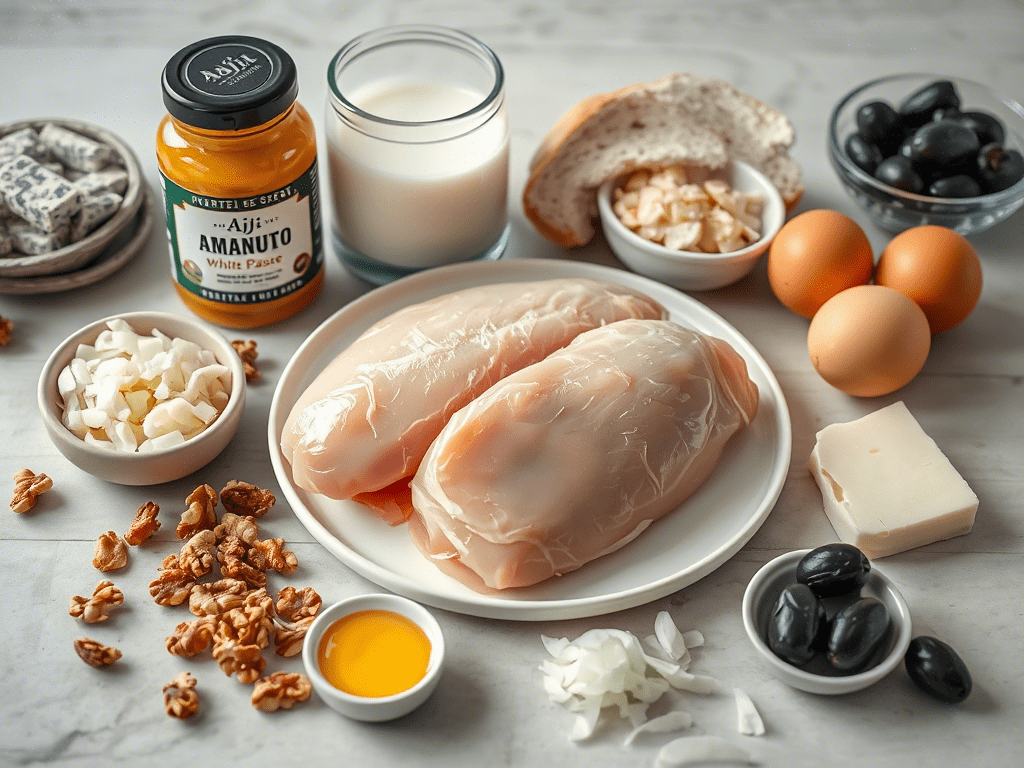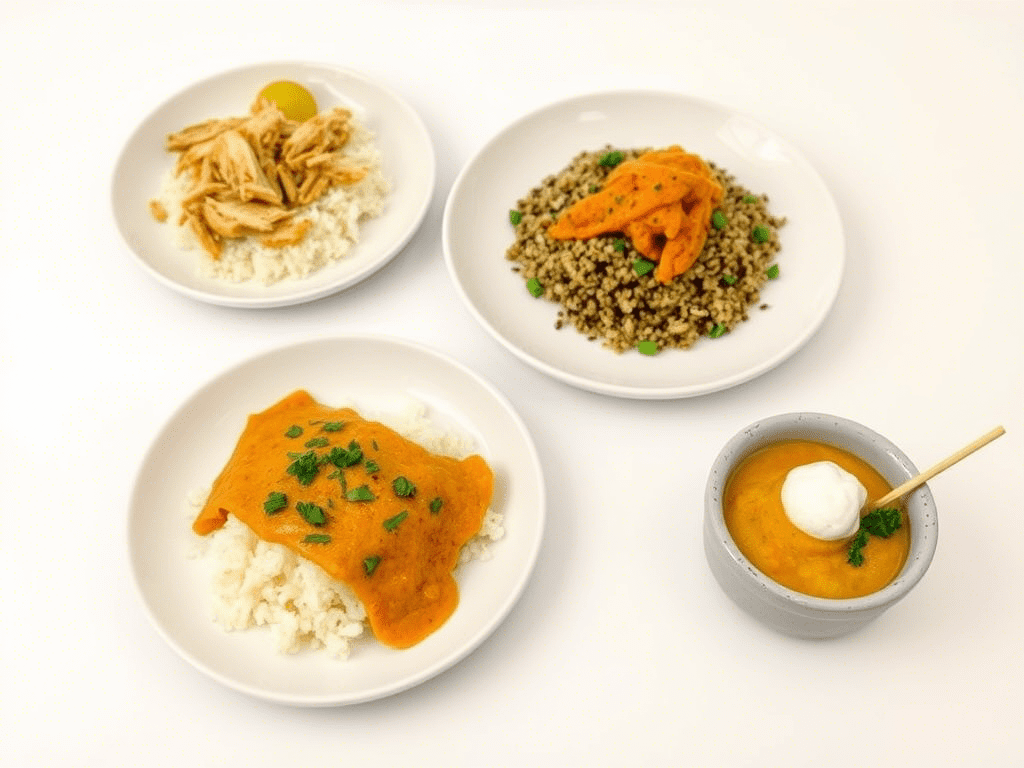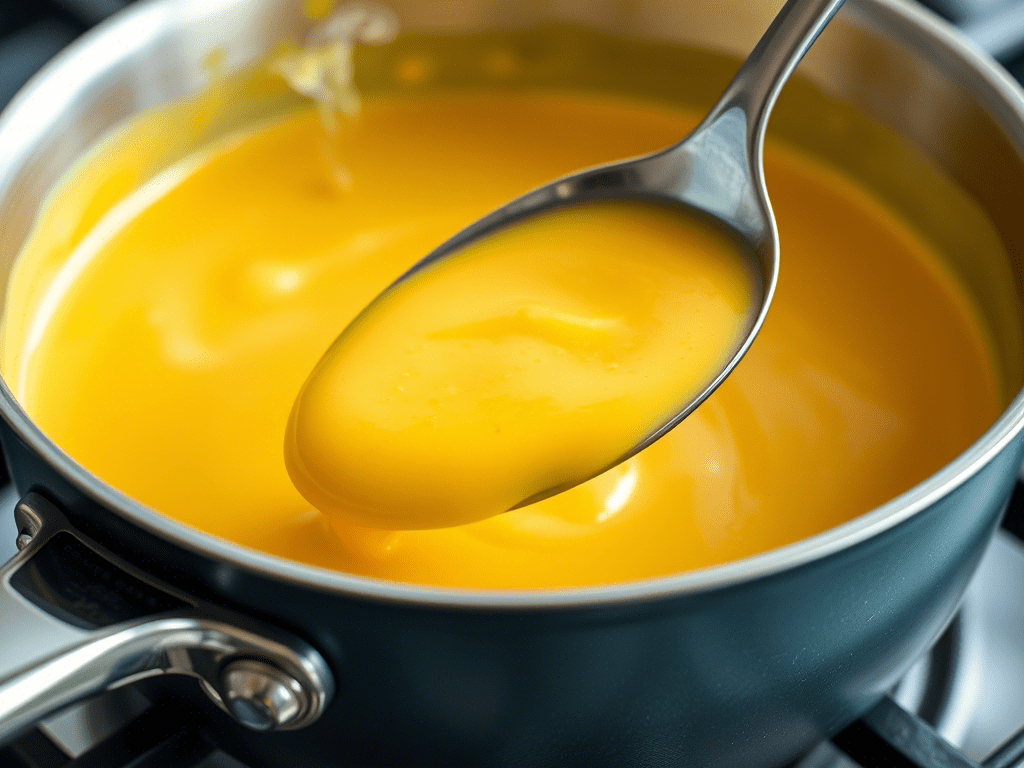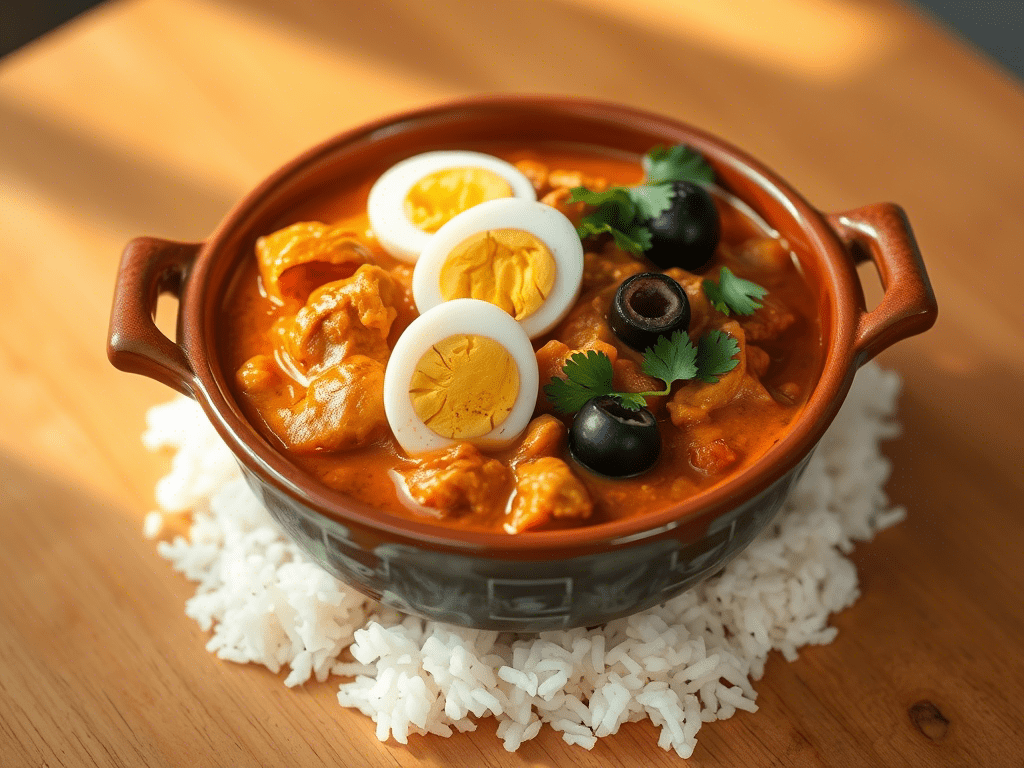7 Irresistible Reasons to Try Aji de Gallina – Peru’s Creamiest Chicken Dish
Creamy, comforting, and bursting with bold flavor, aji de gallina is more than just a traditional Peruvian dish—it’s a bowl of rich heritage and soul-satisfying goodness. With roots tracing back to colonial times, this creamy chicken stew has become a staple in Peruvian households and a rising star on global food blogs.
So, what makes aji de gallina Peruvian food royalty? It’s the balance—mild heat from aji amarillo peppers, a velvety sauce thickened with bread and nuts, and tender shredded chicken served over rice or potatoes. It’s humble, hearty, and surprisingly easy to make at home.
In this guide, you’ll not only get a full aji de gallina recipe, but also learn what makes it so iconic, how to perfect the sauce, the best ways to serve it, and even how to add your own modern twist. Whether you’re discovering it for the first time or looking to recreate grandma’s version, you’re in the right place.
Table of Contents
What Is Aji de Gallina?
Aji de gallina is one of the most beloved dishes in Peruvian cuisine—a creamy, mildly spicy chicken stew that feels like a warm hug on a plate. The name literally translates to “chili chicken,” but it’s so much more than that.
At its heart, aji de gallina Peruvian style combines shredded chicken with a rich, velvety sauce made from soaked bread, milk, parmesan cheese, walnuts, and the key ingredient: aji amarillo. These vibrant yellow Peruvian peppers give the dish its signature color and mild, fruity heat.
Traditionally, it’s served over white rice and accompanied by boiled potatoes, black olives, and hard-boiled eggs. It’s simple comfort food with deep cultural roots—eaten at home, in markets, and even at special celebrations.
You can think of aji gallina as Peru’s answer to mac and cheese: classic, creamy, and deeply nostalgic. But thanks to the aji amarillo, it carries a distinctive kick that sets it apart from other creamy chicken dishes.
Ingredients You’ll Need
To make an authentic aji de gallina recipe, you don’t need fancy ingredients—just a few key elements that come together to create rich, creamy magic. Most of these are pantry staples, but there are a couple of must-haves specific to Peruvian cooking.

Essential Ingredients:
- Chicken breast or thighs – Poached and shredded. Chicken breast keeps it lean, while thighs add more flavor and richness.
- Aji amarillo paste – The heart of the dish; fruity, mildly spicy, and golden. If you’re new to Peruvian cuisine, this is the ingredient that gives the dish its identity.
- White bread or sandwich rolls – Soaked in milk to thicken the sauce and add subtle sweetness.
- Evaporated milk or whole milk – Creates the creamy base. Evaporated milk adds more depth and is more traditional.
- Parmesan cheese – Adds depth, umami, and a salty finish that balances the mild heat.
- Walnuts (or pecans) – Crushed or blended. Give the sauce a subtle richness and slight nuttiness.
- Onion and garlic – Sautéed until translucent, forming the flavor base of the sauce.
- Vegetable oil – For sautéing the aromatics. You can substitute with olive oil for a deeper flavor.
- Salt and pepper – To balance flavors and enhance the overall taste profile.
Optional but Traditional Additions:
- Hard-boiled eggs – Served sliced on top, adding color and texture.
- Black olives – For a salty, earthy bite that contrasts beautifully with the creamy sauce.
- Boiled yellow potatoes – Classic side, often sliced and placed next to the rice.
- White rice – Always served underneath the stew, acting as a neutral canvas for the rich sauce.
If you can’t find fresh aji amarillo, you can buy the paste online (Amazon has great options). It’s the one ingredient you shouldn’t skip—aji de gallina just isn’t the same without it. You can even freeze leftover paste in ice cube trays for future use.
Preparing your ingredients before you start cooking will make the process smoother and more enjoyable. Once you’ve got everything ready, the rest comes together quickly—and the aroma will have everyone in your kitchen asking, “What’s cooking?”
Authentic Aji de Gallina Recipe (Step-by-Step)
Now that you’ve gathered all your ingredients, it’s time to bring them together and create the iconic aji de gallina. This recipe is simple to follow, but the result is rich and layered with flavor. Don’t rush the sauce—let it develop slowly and reward you with depth.

Prep Time: 15 mins
Cook Time: 40 mins
Serves: 4
Instructions:
- Poach the Chicken
In a pot, cover your chicken breasts or thighs with water. Add a pinch of salt and simmer for 15–20 minutes until fully cooked. Remove and shred the meat. Reserve 1 cup of the poaching liquid. - Soak the Bread
Tear the white bread into chunks and soak it in evaporated milk until soft. Blend into a smooth paste and set aside. - Sauté the Aromatics
In a large pan, heat vegetable oil over medium heat. Sauté chopped onion and garlic until translucent and fragrant—about 5 minutes. - Add the Aji Amarillo Paste
Stir in 2–3 tablespoons of aji amarillo paste and cook for 2–3 minutes. The color will deepen, and the smell will be amazing. - Make the Sauce
Add the blended bread-milk mixture to the pan. Stir continuously to avoid lumps. Slowly add the reserved chicken broth and crushed walnuts. Keep stirring until it thickens into a creamy sauce. - Stir in Cheese and Seasoning
Add the grated parmesan and season with salt and pepper to taste. Let everything simmer gently for another 5–10 minutes. - Fold in the Chicken
Add the shredded chicken into the sauce. Mix well and let it warm through for a few minutes. If the sauce is too thick, adjust with more broth or milk. - Serve
Spoon over a bed of steamed white rice. Garnish with boiled potatoes, sliced hard-boiled eggs, and black olives. Serve warm and enjoy!
Once you make this aji de gallina recipe, you’ll see why it’s considered one of Peru’s most cherished dishes. It’s hearty, vibrant, and full of character—just like the culture it comes from.
Why It’s Peru’s Favorite Comfort Food
For many Peruvians, aji de gallina isn’t just a meal—it’s a memory. It’s what grandma made on Sundays, what you eat at birthday lunches, and what’s waiting for you when you return home after a long trip. Creamy, mildly spicy, and rich with flavor, it hits that perfect balance between comfort and complexity.
Unlike fiery dishes that shock your taste buds, aji gallina wraps you in warmth. The aji amarillo brings a slow-building heat that enhances rather than overwhelms. The texture is soft and silky from the bread and milk, yet you get surprising bursts of flavor from the cheese, nuts, and garnishes.
It’s also a dish that adapts. Whether served at home with a big pot of rice or plated elegantly in a modern restaurant, aji de gallina Peruvian style always delivers familiarity with a touch of flair.
What makes it a true comfort food icon is how it brings people together. It’s the type of dish you make in a big batch, share with family, and go back for seconds without hesitation. In a world of fast meals and shortcuts, aji de gallina reminds us that some of the best things still take a little love and time.
Regional & Modern Variations
Like many traditional dishes, aji de gallina isn’t made the exact same way in every Peruvian kitchen. From the coastal cities to the Andes, you’ll find small tweaks that reflect local tastes and ingredients—all while staying true to the dish’s creamy, comforting roots.
Regional Twists
- Coastal Versions: Use more aji amarillo for added heat and may substitute pecans for walnuts depending on availability. Some even use a splash of white wine for depth.
- Andean Variations: May include native potatoes or even cheese from the highlands for a sharper flavor.
Even the amount of creaminess can change—some cooks make it extra thick, while others prefer a looser sauce served with lots of broth on the side.
Modern Interpretations
The rise of fusion cuisine has brought aji gallina into new territory. You’ll now find:
- Vegetarian versions using mushrooms or jackfruit instead of chicken
- Low-carb takes with cauliflower mash instead of rice or potatoes
- Fine dining twists, like turning the sauce into a foam or stuffing it inside ravioli
- Dairy-free adaptations using almond milk and nutritional yeast in place of cheese and milk
Despite all these changes, the soul of aji de gallina Peruvian cuisine remains intact—comforting, colorful, and rooted in home-cooked love.
Serving Suggestions & Sides
A big part of what makes aji de gallina so satisfying is how it’s served. While the creamy stew is the star, the right accompaniments make the dish shine even more. Whether you’re going for traditional or modern, here’s how to serve it like a pro.

Classic Peruvian Style
- Steamed white rice – The essential base. It absorbs the sauce and balances the richness.
- Boiled yellow potatoes – Sliced and served alongside or underneath the stew. They soak up flavor beautifully.
- Hard-boiled eggs – Sliced and laid gently on top, they add texture and visual contrast.
- Black olives – A salty, earthy touch that complements the creaminess of the dish.
This classic layout is how aji de gallina Peruvian families have been serving it for generations. It’s filling, balanced, and always crowd-pleasing.
Modern Presentation Ideas
- Serve it in a ceramic bowl with a swirl of aji amarillo paste on top
- Garnish with microgreens, crushed walnuts, or a drizzle of olive oil
- Plate it with quinoa or wild rice for a nutritional upgrade
- Offer mini portions in ramekins for a tapas-style dinner
No matter how you serve it, this dish holds its own. Just make sure your sauce is warm, the rice is fluffy, and the toppings are fresh—that’s all it takes to turn a humble stew into a memorable meal.
Tips for the Perfect Sauce
The soul of any great aji de gallina is its sauce—creamy, golden, just the right amount of heat, and rich without being heavy. If the sauce is off, the whole dish suffers. But with a few simple techniques, you can make sure your sauce is smooth, flavorful, and worthy of a second (or third) serving.

Blend Until Smooth
Soak your bread well in evaporated milk and blend it until no chunks remain. The same goes for the walnuts or pecans. A silky texture starts with a proper blend.
Balance the Liquids
Evaporated milk adds creaminess, but too much can make the sauce overly thick or heavy. A splash of chicken broth can lighten it and give it more body. Don’t be afraid to adjust as you go.
Sauté the Aji Amarillo Properly
Cooking the aji amarillo paste with onions and garlic before adding liquids brings out its full flavor. It deepens the color and removes any bitterness.
Don’t Skip the Cheese
Parmesan isn’t just for garnish—it melts into the sauce and adds salty umami that balances the richness. Use fresh grated cheese for the best results.
Keep the Heat Low
Once everything’s combined, simmer the sauce gently. High heat can make it split or burn. Stir often and be patient—it’s worth it.
When you master the sauce, you unlock the real heart of aji gallina. It’s where the warmth, comfort, and flavor all come together in every spoonful.
Mistakes to Avoid
Even though aji de gallina is a forgiving dish, there are a few common pitfalls that can turn your creamy masterpiece into a lumpy, bland mess. Here’s what to look out for—and how to dodge the most frequent kitchen missteps:
Overcooking the Chicken
Boiling chicken for too long can make it dry and stringy. Simmer gently and pull it off the heat as soon as it’s cooked through. Then shred it while it’s still warm—it’ll absorb the sauce better.
Using Low-Quality Aji Amarillo
This is not the place to cut corners. Aji amarillo paste is the heart of aji de gallina. If it’s too diluted or metallic-tasting, your whole dish will suffer. Use a trusted brand or homemade paste when possible.
Not Blending the Bread and Nuts Properly
Leaving chunks of bread or walnuts in the sauce leads to a grainy texture. Take your time blending everything until silky smooth.
Letting the Sauce Split
Once you add dairy (milk, cheese), keep the heat low and steady. High heat can cause the sauce to break. Stir frequently and be gentle.
Forgetting to Taste and Adjust
The sauce might need more salt, a touch of broth to loosen, or even a bit of cheese for extra umami. Always taste before serving.
Avoiding these mistakes is how you go from “pretty good” to “wow, you made this!?” Trust the process, and let the ingredients shine.
FAQ – Aji de Gallina
Can I freeze aji de gallina?
Yes, you can freeze it—just let it cool first. Store in airtight containers and reheat gently on the stove. Keep in mind, the sauce may thicken, so add a splash of broth when reheating.
Is there a dairy-free version of aji de gallina?
Absolutely. Replace evaporated milk with unsweetened almond or oat milk, and use nutritional yeast or vegan parmesan instead of cheese. The result is different, but still creamy and delicious.
Can I use rotisserie chicken instead of poaching?
Yes, especially if you’re short on time. Just shred it finely and add it at the end. However, poaching gives you the bonus of flavorful broth.
What’s the difference between aji amarillo and ají limo?
Both are Peruvian peppers, but aji amarillo is mild and fruity—perfect for aji de gallina. Ají limo is smaller and much hotter, often used in ceviche.
Can I make this dish ahead of time?
Definitely. In fact, many say aji de gallina tastes better the next day. Store in the fridge and gently reheat when ready to serve.
Final Thoughts + Internal Links + Amazon Picks
If you’re looking for a dish that brings comfort, flavor, and a touch of tradition, aji de gallina delivers every single time. It’s rich, creamy, mildly spicy, and deeply satisfying—whether you’re cooking it for the first time or rediscovering a family favorite.
Now that you’ve seen how to make it, how to serve it, and how to avoid the common mistakes, you’re more than ready to bring this Peruvian classic to your table. Just take your time with the sauce, taste as you go, and don’t forget the olives and egg on top.
Ready to cook like a true Peruvian? Let’s go.
from GrowVibe
Amazon Picks
- Aji Amarillo Paste – The star of the dish, authentic flavor in a jar
- Evaporated Milk (6-pack) – Pantry staple for rich sauces
- Mini Food Processor – Perfect for blending the sauce base
- Walnut Halves – Adds depth and texture to the cream
- Ceramic Serving Bowls – Make your final plating look restaurant-worthy
Aji de gallina is proof that some of the best meals come from simple ingredients and a lot of love. Buen provecho!






